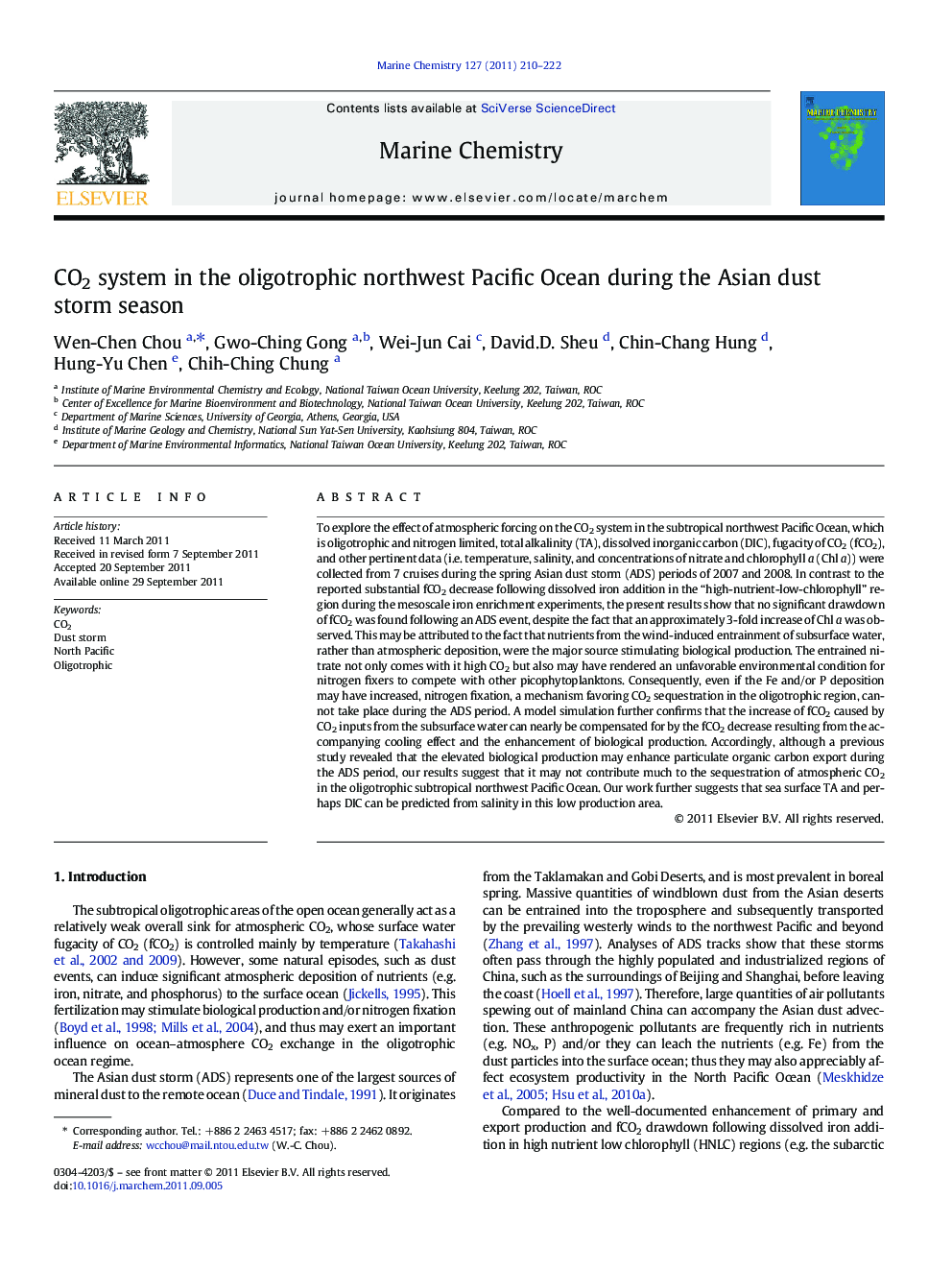| Article ID | Journal | Published Year | Pages | File Type |
|---|---|---|---|---|
| 1261495 | Marine Chemistry | 2011 | 13 Pages |
To explore the effect of atmospheric forcing on the CO2 system in the subtropical northwest Pacific Ocean, which is oligotrophic and nitrogen limited, total alkalinity (TA), dissolved inorganic carbon (DIC), fugacity of CO2 (fCO2), and other pertinent data (i.e. temperature, salinity, and concentrations of nitrate and chlorophyll a (Chl a)) were collected from 7 cruises during the spring Asian dust storm (ADS) periods of 2007 and 2008. In contrast to the reported substantial fCO2 decrease following dissolved iron addition in the “high-nutrient-low-chlorophyll” region during the mesoscale iron enrichment experiments, the present results show that no significant drawdown of fCO2 was found following an ADS event, despite the fact that an approximately 3-fold increase of Chl a was observed. This may be attributed to the fact that nutrients from the wind-induced entrainment of subsurface water, rather than atmospheric deposition, were the major source stimulating biological production. The entrained nitrate not only comes with it high CO2 but also may have rendered an unfavorable environmental condition for nitrogen fixers to compete with other picophytoplanktons. Consequently, even if the Fe and/or P deposition may have increased, nitrogen fixation, a mechanism favoring CO2 sequestration in the oligotrophic region, cannot take place during the ADS period. A model simulation further confirms that the increase of fCO2 caused by CO2 inputs from the subsurface water can nearly be compensated for by the fCO2 decrease resulting from the accompanying cooling effect and the enhancement of biological production. Accordingly, although a previous study revealed that the elevated biological production may enhance particulate organic carbon export during the ADS period, our results suggest that it may not contribute much to the sequestration of atmospheric CO2 in the oligotrophic subtropical northwest Pacific Ocean. Our work further suggests that sea surface TA and perhaps DIC can be predicted from salinity in this low production area.
► Carbonate data during the ADS period in the oligotrophic NW Pacific were reported. ► No significant fCO2 drawdown was found despite 3-fold increase of Chl a. ► Nutrients from the subsurface water were the major source stimulating production. ► ADS event may not contribute much to CO2 uptake in the oligotrophic ocean.
